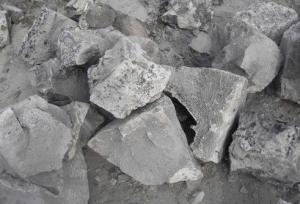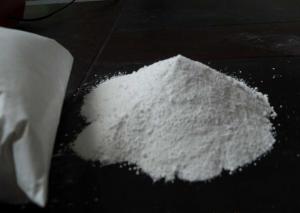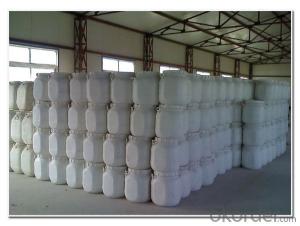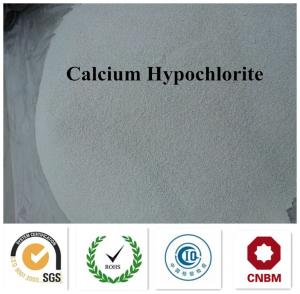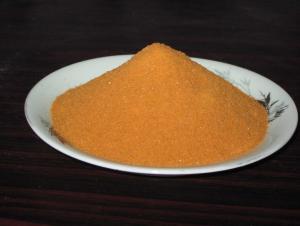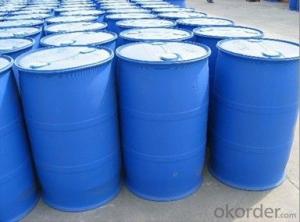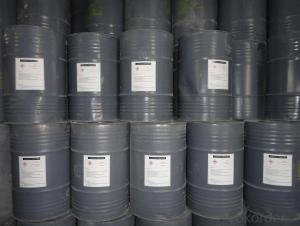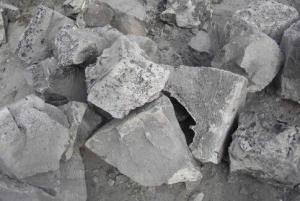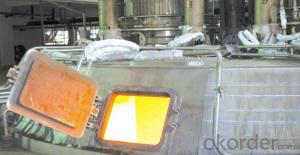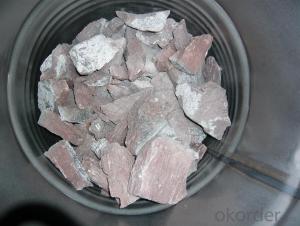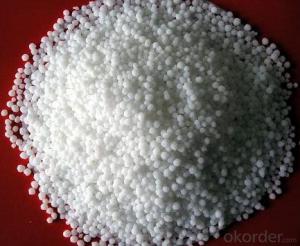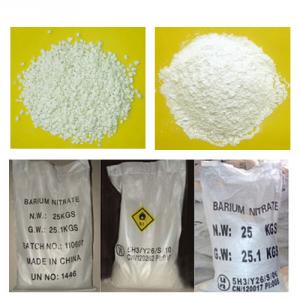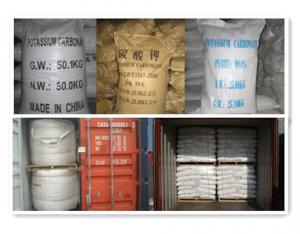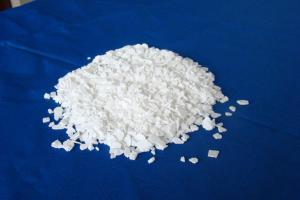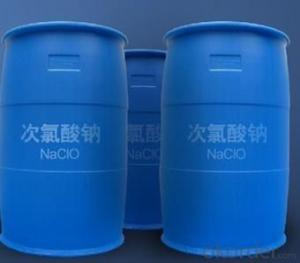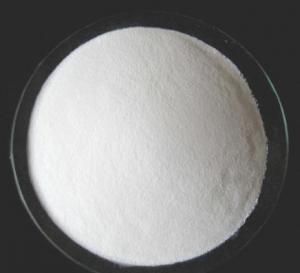Calcium Carbide with good quality and lower price
- Loading Port:
- Tianjin
- Payment Terms:
- TT OR LC
- Min Order Qty:
- 22.5
- Supply Capability:
- 1000 m.t./month
OKorder Service Pledge
OKorder Financial Service
You Might Also Like
This product is lumpy substance, its surface is a little deep gray, has slight nasty smell. It can produce acetylene gas when met water, it can burn when meets fire. The acetylene gas mix with air will form explosive gas (explosive range of acetylene gas in the air is 2.3% - 81%).
Technical specifications and features
1. Name
Calcium Carbide
2. Molecular formula
CaC2
3. UN
1402
4. Class
4.3
5. HS code
28491000
6. Gas yield20 101.3 Kpa
≥295L/KG
7. PH3(V/V)
≤0.08%
8. H2S(V/V)
≤0.1%
9.Molecular weight
64.10
(according to 1995 international relative atomic mass)
10. SIZE
4-7,7-15,15-25,25-50,50-80,80-120MM
11. Packing
50kg or 100kg iron drum
Cautions during transportion:
The packing must be kept in good condition and the goods should be stored in a dry,cool and ventilated place.It should be separate from the cargo can burn and acid.It should avoid meeting water and moisture.It should give off the acetylene in iron drum before storing in warehouse. Rolling drums,heavy putting down and colliding are not allowed to avoid the spark leads to explosion.
- Q: Chemical formula The longest inorganic salt
- Basic copper carbonate Cu2 (OH) 2CO3
- Q: Do inorganic mercury salts bioaccumulate?
- Yes they do bioaccumulate. Mercury builds up for years and years, and eventually sits in a residue of pure mercury. - JJ
- Q: By balancing the benefits of dietary supplementation with inorganic salts, what are the advantages and disadvantages of taking health care agents?
- Diet supplementation of inorganic salt or the nutritional needs of the human body is the normal diet of human absorption, rather than through deliberate conditioning to mobilize the body's ability to absorb (including deliberately balanced diet), that is, add inorganic salt only conventional diet Yes, no other adjustment supplement is its benefit, that is, healthy people do not need to like non-healthy state as a way to seek additional, this is his advantage.
- Q: How to isolate the effects of inorganic salts on enzyme solubility
- The effect of inorganic salts on the solubility of the enzyme was studied. The inorganic raw materials were pretreated with inorganic salts to separate the solid-liquid phase, and some of the lignin and hemicellulose were dissolved, and the sulfuric acid and the inorganic salt were added to the cotton Treatment, thereby improving the enzymatic hydrolysis efficiency. Using different amounts of sulfuric acid
- Q: How can experiments prove that there are inorganic salts in the leaves of plants
- The experimental leaves used to dry, crushed into powder or sintered ash, and then the analysis of mineral elements, we can learn.
- Q: Are the inorganic salts mineral and they are soluble in water?
- Generally speaking, inorganic salts, including minerals, inorganic salts are not minerals. Some inorganic salts can be soluble in water and some can not, the vast majority of minerals do not dissolve in water, otherwise the rain on the rocks are not dissolved Is it gone?
- Q: An inorganic salt is dissolved in water and yields a solution that has a color. Make a statement about the type of element the substance contains that casuses the color.Thanks!
- Many inorganic salts form colored solutions . pper ( II) sulfate ( Blue ) nickel (II) acetate = green, mangaanse ( II) chloride = pink, iron(III) chloride = yellow, potassium dichromate, orange and so many more Can you be more specific ?
- Q: What is the disease of inorganic salt crystals?
- Drink less, the urine will be reduced, the urine of the inorganic salt concentration will be high, the discharge of urine encountered outside the cold air, will immediately cool, urine inorganic salts to precipitate down, so that urine Into the lime watery white turbid liquid. Check this urine, the urine heated to a certain temperature will make it clear; also due to temporary urine alkalization caused by white turbid urine, such as taking alkaline drugs or After a lot of alkaline food, or eat can make the inorganic salt in the urine of the increase in the content of food, fruit, vegetables, there will be white urine.
- Q: The application of various inorganic salts in the human body?
- Iron is an essential trace element in the animal body and plays an extremely important role in the metabolism of animals.It is not only a component of a variety of compounds but also a variety of metabolic-related enzyme activities, and to a certain extent The immune function of the body.
- Q: Lack of calcium, phosphorus, iron, zinc inorganic salt should eat what?
- Soy products containing more calcium. Animal liver, spinach iron, zinc and so on.
Send your message to us
Calcium Carbide with good quality and lower price
- Loading Port:
- Tianjin
- Payment Terms:
- TT OR LC
- Min Order Qty:
- 22.5
- Supply Capability:
- 1000 m.t./month
OKorder Service Pledge
OKorder Financial Service
Similar products
Hot products
Hot Searches
